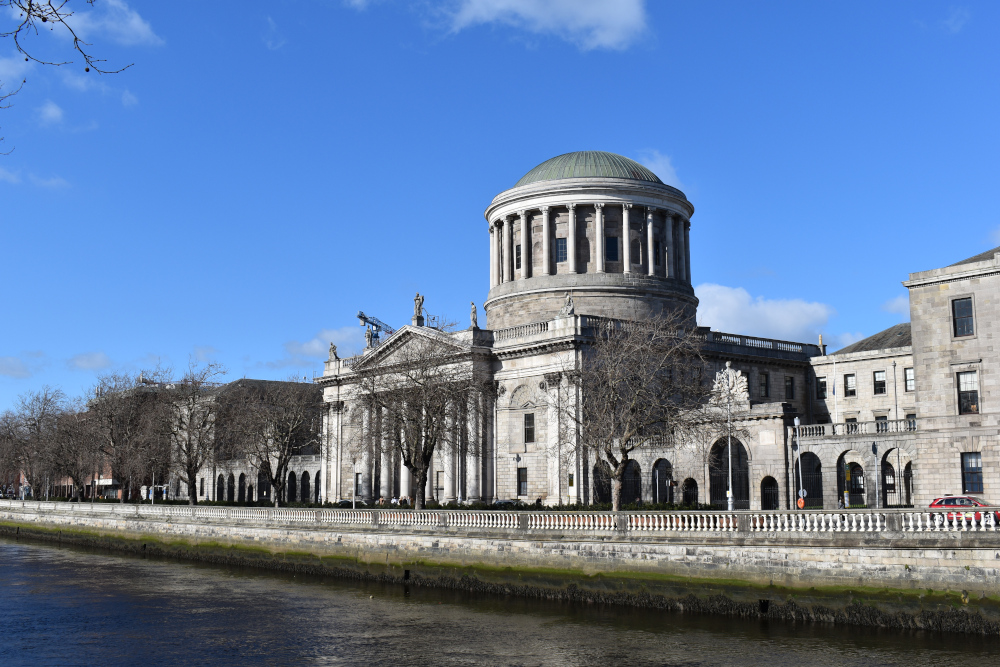Supreme Court: Order quashing decision to grant planning permission for 1,592 apartments upheld

The Supreme Court has determined that An Bord Pleanála failed to give adequate reasons for its decision to grant planning permission for a 1,592-apartment strategic housing development and failed to take relevant considerations into account.

About this case:
- Citation:[2024] IESC 13
- Judgment:
- Court:Supreme Court
- Judge:Mr Justice Séamus Woulfe
Delivering judgment for the Supreme Court, Mr Justice Seamus Woulfe opined that the duty upon the Board to give reasons “is not a form of ‘box ticking’… relevant factors must be taken into account and analysed”.
The judge also considered that the Board’s inspector “did not actually make any determination as to material contravention” and found it “striking that there is absolutely no reference of any kind made by the Inspector to the relevant policy in the development plan”.
Background
On 4 November 2021 the notice party, CWTC Multi Family ICAV, was granted planning permission by An Bord Pleanála for a large-scale build to rent development comprising 1,592 apartments at Holy Cross College in Drumcondra. The application had been made under the strategic housing development (SHD) procedure pursuant to the Planning and Development (Housing) and Residential Tenancies Act 2016.
Some of the issues arising in respect of the development included that parts of the five protected structures which were to be reworked were intended for demolition, that the “Red House” could be affected by the development, that the certain apartment blocks exceeded the height restrictions as set out in the Dublin City Development Plan 2016–2022, and that that a proposed basement structure beneath the eastern garden area would compromise mature trees and the green areas there.
The High Court
The applicant challenged the grant of permission. Mr Justice Richard Humphreys distilled the challenge into two net headings — the objection of Dublin City Council based on the impact of the development on protected structures and related issues regarding material contravention of the development plan, and the objection regarding the basement structure and the material contravention of the development plan in respect of same.
As to the first objection, the court considered s.57(10)(b) of the Planning and Development Act 2000 which precludes the Board from granting permission for the demolition of a protected structure save in exceptional circumstances. Noting that proposals for full or partial demolition of protected structures need to be “carefully scrutinised”, the judge found inter alia that the question of s.57(10) had not been considered by the Board Inspector.
As to the second objection, the court found that the inspector had not properly engaged with the objections of the council concerning the proposed basement area and that this materially contravened the development plan.
Having quashed the Board’s decision, the High Court refused the notice party’s application for leave to appeal to the Court of Appeal. The Supreme Court subsequently granted leave to appeal in respect of the interpretation of s.57(10)(b), of the required standard of review and the extent of the duty to give reasons.
The Supreme Court
Mr Justice Woulfe considered whether the requirement for ‘exceptional circumstances’ is triggered by demolition of any part of a protected structure, the entire structure or something close to an entire structure.
The judge remarked that the general position is that the word “structure” in the 2000 Act “prima facie means any structure or any part of any structure. The question then, as per the terms of s. 2(1) itself, is whether, when one is construing the word “structure” as it appears in s. 57(10)(b), the context requires a different meaning.”
In light of the case of Heather Hill Management Company CLG v. An Bord Pleanála [2022] IESC 43, the court considered the other sections within the same part of the 2000 Act. The court determined that as the drafters of the 2000 Act repeatedly made reference to “structures, or parts of structures” or to “a structure or any element of a structure”, the consistent pattern in the 2000 Act was that if it was intended for the word “structure” to include any part or element of a structure, there was express language supporting that.
The court examined the regime governing protected structures in the 2000 Act and the “double-test” in s. 4(1)(h) and s. 57(1) of the 2000 Act. Observing that the Oireachtas intended a “graduated level” of protection and that a “harmonious interpretation” of s.57(10)(a) meant that a “protected structure” is the entire structure and not part thereof, the court determined that the High Court erred in his interpretation of s.57(10)(b) and that “the context” required a different meaning to be given to the word “structure” so that the requirement for exceptional circumstances in the case of the proposed demolition of a protected structure was not triggered by the proposed demolition of any part of such a structure.
Turning to the second issue of the material contravention of the development plan and the standard of review, the Supreme Court found that the starting point was the nature of the Board’s determination as to whether or not the proposed development, “as a matter of law and fact”, would materially contravene the council’s policy, CHC2, as set out in the development plan.
Finding that the inspector was required to determine whether the development would materially contravene CHC2 by harming the curtilage of a protected structure and whether by inter alia its proportions it would “relate to and complement” the character of the protected structure, the court opined that the inspector’s conclusion that “the proposed Block D1 can comfortably sit, side by side, with existing protected structures in the vicinity without detriment to their character and setting” could not “be viewed as an implicit or indirect assessment of compliance with policy CHC2”.
Accordingly, Mr Justice Woulfe agreed with the High Court that the Board “did not actually make any determination as to material contravention” and quashed its decision due to its failure to take relevant considerations into account, being the relevant provisions of the development plan and of s. 9(6) of the 2016 Act which provides that it may only grant permission for a “non-zoning” material contravention where certain stipulated special circumstances apply.
On the issue of the proposed basement, Mr Justice Woulfe observed that the application required focus on the policy set out in s.16.10.15 of the development plan which discourages significant basement development adjacent to protected structures. Finding it “incumbent” upon the inspector to determine whether the proposed development would materially contravene the s.16.10.15 policy, the court found that no such determination had been made and quashed the Board’s decision for its failure to take the relevant provisions of the development plan relating to basements and s. 9(6) of the 2016 Act.
Addressing the Board’s duty to give reasons for its decision, Mr Justice Woulfe considered the approach in Connelly v An Bord Pleanála & Ors [2018] IESC 31 to be the “correct approach” to reviewing decisions of the Board.
The court pointed out: “The report of the C.O. contained strong recommendations and negative observations regarding these two factors, the landscape and the height in conjunction with the typology and high-density intended use. These were factors of singular importance, not perhaps found in many other large-scale residential developments and required to be specifically dealt with by the Inspector/the Board.”
Recognising that it was not possible to understand the reasons why the Board gave permission for the construction of Block D1 nor to determine what type of method statement would have met the council’s objections regarding the loss of landscape and trees, the Supreme Court was not satisfied that the reasoning of the Board was adequate and upheld the reasoning of the High Court.
Conclusion
Accordingly, the Supreme Court upheld the order quashing the Board’s decision to grant permission.
Sherwin v. An Bord Pleanála [2024] IESC 13










